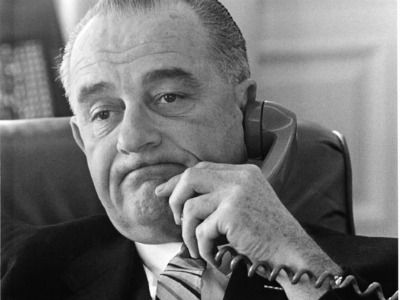Res Judicata: Wal-Mart Decision Ends the "Great Society" in our Courts
In 1966, as part of explosion of federal programs that are collectively known as the so-called “Great Society, ” Congress amended Rule 23 of the Federal Rules of Civil Procedure, which governs “class actions.” Prior to that time such cases were rare even though the Rule had been in existence since 1938. But the term “class action” had not entered the legal or public lexicon, and the few lawyers who brought such cases achieved little for their clients or themselves by way of fees.
Lyndon Johnson and the huge Democratic majority elected in 1964 sought to make Rule 23 a tool for liberal lawyers to wield in federal courts in the name of civil rights. So Congress literally rewrote the Rule to encourage plaintiffs’ lawyers to bring such cases and judges to certify them as class actions. A lawyer with a single client employed at a company allegedly discriminating against minorities or women in employment could file a federal lawsuit on behalf of the entire putative “class” of similarly situated fellow employees.
A new industry was born: the class action lawyer. Class actions proliferated, the elite law schools created legal aid clinics to alleged victims of discrimination, and foundation money spawned “public interest” law firms devoted exclusively to this endeavor. Even though many of these cases were meritorious, i.e., were brought to redress real cases of discrimination, many were not. In a very large number of cases lawyers alleged widespread discrimination when there was only a handful of aggrieved employees. No matter, judges erred very strongly on the side of the plaintiffs and certified a huge majority of these cases as class actions even when only a single named person brought the suit. And gradually, federal judges began to award the classes back-pay if they prevailed in proving discrimination. And this could be done without notifying the “class” members that such a case was brought on their behalf. So they had no reason to monitor the performance of the “class counsel” and no right not to participate in the suit.
It was inevitable that one of these case would be brought, and certified by a federal judge, against the nation’s largest employer, Wal- Mart. The case was filed in San Francisco, a friendly jurisdiction, and alleged the company, discriminated against all women in hiring and promotion at all of the retailer’s locations. In 2007 a judge certified the class as requested, and the quirky Ninth Circuit Court of Appeals upheld it in an unusual en banc (nine judge) panel by a vote of 5-4. Twenty years ago the Supreme Court would not have agreed to take the case, so committed was the judiciary to these cases. But elections do indeed have consequences, and there is now a 5 member majority on the Court that sees Rule 23 as a decidedly mixed experiment in private enforcement of the Civil Rights Act. (I will not describe the court factions in conventional political terms, unlike other commentators. It is better to judge their performance by what they actually say in published opinions. Justice Scalia is skeptical of plaintiffs’ claims. He demands real proof. Justice Ginsburg thinks federal courts serve the public well and welcomes lawsuits.) In June the Court “decertified” the Wal-Mart class. It did so because five justices would not indulge in the presumption of guilt.
Up to now, a judge considering whether to certify a discrimination case as a class was instructed to assume that the plaintiff’s allegations of discrimination were true. Once read in that light, the policy of Rule 23 plainly titled heavily in favor of the proponent of the class. Justice Scalia, writing for the majority, refused to do that. Rather, he did not believe that Wal-Mart had a company-wide policy of discrimination because the three plaintiffs simply did not proffer enough proof of that. Rather, their theory was that the company “decentralized” hiring to the store managers, who, without oversight by corporate higher-ups, were engaging in pervasive discrimination. Many federal judges had certified discrimination cases on this theory, thereby requiring the employer to prove its innocence at a costly, high-profile trial. Typically, the employer would settle rather than roll the dice. Justice Ginsburg, writing for the four dissenters, thought the majority’s “dissimilarities approach leads the Court to train its attention on what distinguishes individual class members rather than on what unites them.” Isn’t that what courts are supposed to do, give all parties, even employers accused of discrimination, a presumption of innocence and make the plaintiff prove her case? The presumption that decentralized managers will discriminate in hiring because the plaintiffs’ lawyers say so is not credible or sufficient to subject an employer, even a small one, to a class action where its reputation may not survive a negative verdict. (In the interest of full disclosure I should point out that I have brought several class actions, though not based upon discrimination.)
In 2007 the Supreme Court directed all federal judges to require plaintiffs’ claims to be “plausible” in order to get in the courthouse door. Basically all the Court did in the Wal- Martcase is require discrimination lawyers to do the same thing. This is hardly a revolutionary concept. But it does depart from the deferential body of law the judiciary has erected for them since 1966. And in a quite stunning moment of unanimity, the Wal-Mart court ruled 9-0 that a successful discrimination plaintiff cannot be awarded money damages for back pay in addition to an injunction to end the discrimination.
The Great Society no longer presides in our federal courts.


